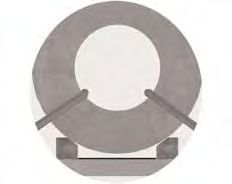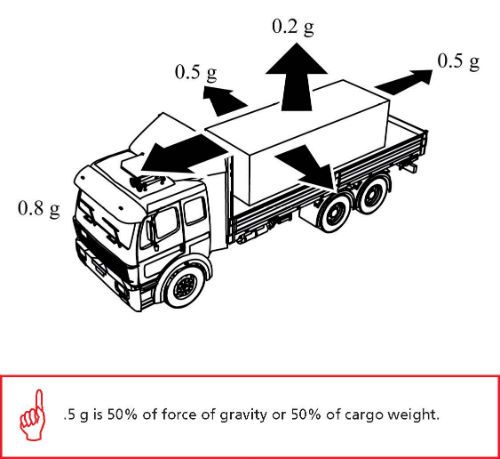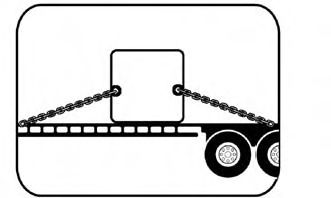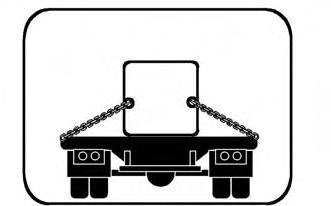Review Questions - Click On The Picture To Begin...

- 10,000 lbs.
- 4,000 lbs.
- 4,500 lbs.
- 8,000 lbs.
Quote From The CDL Manual:
The manufacturer’s working load limit is reduced by 50% for tiedowns which are directly attached from the vehicle to the article, and tiedowns attached to the vehicle that go around, through or over the article and are reattached to the same side of the vehicle.
- 100 degrees.
- 30 degrees.
- 45 degrees.
- 90 degrees.
Quote From The CDL Manual:

A direct tiedown is considered effective against forward and rearward forces if it makes an angle less than 45 degrees when viewed from the side of the vehicle.

A direct tiedown is considered effective against side-to-side forces if it makes an angle less than 45 degrees with the horizontal when viewed from the front or rear of the vehicle.
- Edge protector.
- Tarp.
- Dunnage bag.
- Void filler.
Quote From The CDL Manual:
Tarp:
A waterproof sheet used to cover cargo.
- A specialized container, primarily used to contain and transport materials in the waste, recycling, construction/demolition, and scrap industries, which are used in conjunction with specialized vehicles, in which the container isloaded and unloaded onto a tilt frame body by an articulating hook-arm.
- A vehicle especially built and fitted with locking devices for the transport of intermodal containers.
- The load carrying area of a truck, trailer, or intermodal container.
- A reusable, transportable enclosure that is especially designed with integral locking devices that secure it to a container chassis trailer to facilitate the efficient and bulk shipping and transfer of goods by, or between various modes of transport, such as highway, rail, sea, and air.
Quote From The CDL Manual:
Container Chassis Vehicle:
A vehicle especially built and fitted with locking devices for the transport of intermodal containers.
- Chock
- Pallet
- Wedge
- Rub Rail
Quote From The CDL Manual:
Pallet:
A platform or tray on which cargo is placed so that it can be handled as an article. (Same as "Skid")
- A structure, device, or another substantial article placed against an article to prevent it from tipping that may also prevent it from shifting.
- An inflatable bag intended to fill otherwise empty space between articles of cargo, or between articles of cargo and the wall of the vehicle.
- A rail along the side of a vehicle that protects the side of the vehicle from impacts.
- A female housing fixed to the side or ends of a vehicle to receive a stake or peg, and may also be used as an anchor point.
Quote From The CDL Manual:
Stake Pocket:
A female housing fixed to the side or ends of a vehicle to receive a stake or peg, and may also be used as an anchor point.








 Cargo Securement Terms That Truck Drivers Should Know:
Cargo Securement Terms That Truck Drivers Should Know:



 TT On Facebook
TT On Facebook